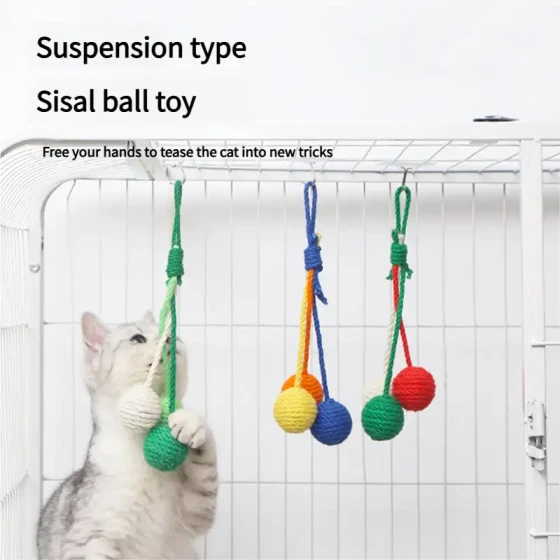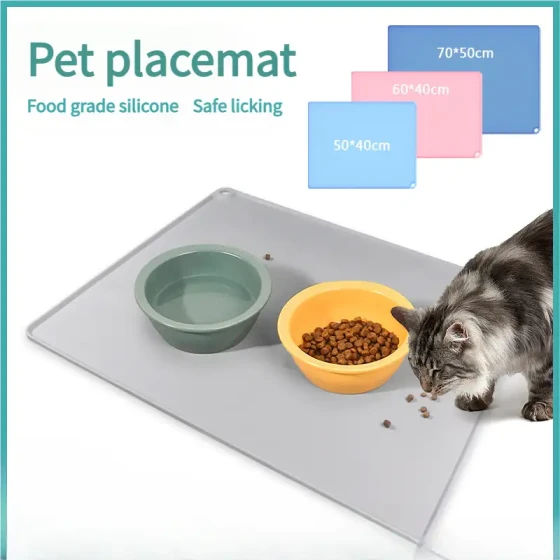Cat Toxoplasmosis_Symptoms and Scientific Testing Methods Fully Explained
Toxoplasmosis is a parasitic infection caused by Toxoplasma gondii, with cats being its primary definitive host. For households with cats, understanding the symptoms and scientific testing methods for feline toxoplasmosis is crucial, as it concerns not only the health of the cats but also the health of family members, especially pregnant women and immunocompromised individuals. Fortunately, although toxoplasmosis sounds alarming, with scientific understanding and preventive measures, it is not a formidable threat. Most cats infected do not show severe symptoms, and the main transmission route to humans is not through direct contact with cats.
What is Cat Toxoplasmosis?
Cat toxoplasmosis is an infection caused by a single-celled parasite called Toxoplasma gondii. Cats play the role of the "definitive host" in the life cycle of toxoplasma, meaning the parasite can sexually reproduce in the cat's intestines and produce oocysts (scientific name: oocysts), which are expelled through the cat's feces.
How Do Cats Get Infected with Toxoplasma?
The main way cats get infected is by hunting or eating raw or undercooked meat containing toxoplasma tissue cysts, such as mice, birds, or other small animals. Mature (sporulated) toxoplasma oocysts present in soil or food or water contaminated with feces can also be ingested by cats causing infection.
Symptoms of Cat Toxoplasmosis
It is important to emphasize that most cats infected with toxoplasma do not show obvious symptoms. They may silently carry the infection and shed oocysts. However, in some cases, especially kittens or cats with a weak immune system, toxoplasma infection can lead to a range of clinical symptoms. These symptoms are nonspecific and may resemble those of other diseases, making diagnosis difficult.
Common symptoms can include:
- General symptoms: fever, lethargy, loss of appetite, weight loss.
- Respiratory symptoms: pneumonia, manifesting as difficulty breathing, coughing.
- Gastrointestinal symptoms: vomiting, diarrhea, or jaundice caused by liver or pancreas damage.
- Neurological symptoms: Depending on the brain areas invaded by toxoplasma, symptoms may include seizures, ataxia (unsteady walking), muscle tremors, behavioral changes.
- Eye symptoms: uveitis (eye inflammation), retinitis, possibly causing eye pain, photophobia, vision loss, or blindness.
- Musculoskeletal symptoms: muscle pain or stiffness.
If your cat shows any of these symptoms and has a history of potential exposure (such as going outdoors to hunt or consuming raw meat), you should take it to a veterinary hospital promptly and inform the vet of the relevant details.
How to Scientifically Test if a Cat is Infected with Toxoplasma?
Diagnosing cat toxoplasmosis usually requires a combination of history, clinical signs, and laboratory test results. Common testing methods include:
-
Serological tests: detecting toxoplasma antibodies in the blood.
- IgM antibody: IgM usually appears shortly after infection. A positive IgM test may indicate an acute infection.
- IgG antibody: IgG appears later, usually detectable weeks after infection. Positive IgG generally means past infection and possible immunity, with a lower chance of shedding oocysts (usually shed only in the first few weeks of initial infection).
Interpretation: Veterinarians will analyze IgM and IgG results together. For example, IgM positive and IgG negative suggests early infection; both positive suggests recent infection; IgM negative and IgG positive indicates past infection; both negative might mean never infected or very early stage infection.
-
Fecal examination: looking for toxoplasma oocysts.
- Microscopic examination of cat feces can detect toxoplasma oocysts.
- Note: Oocysts are very small, and cats shed oocysts only during the first 1-3 weeks (usually around 10-14 days) after initial infection, and not continuously every day. Therefore, a single negative fecal test does not completely rule out infection and multiple tests or serology may be necessary. Additionally, shed oocysts require time and oxygen in the environment to become infectious (a process called sporulation, usually 24-48 hours).
-
PCR testing:
- The polymerase chain reaction (PCR) can detect toxoplasma DNA in the cat's blood, cerebrospinal fluid, or tissue samples. This method is more sensitive and can directly detect the pathogen, helping diagnose active infection.
The veterinarian will choose suitable testing methods or combinations based on the specific situation of the cat to make an accurate diagnosis.
Treatment and Prognosis
If a cat is diagnosed with toxoplasmosis and shows clinical symptoms, the vet will prescribe appropriate medications, commonly clindamycin. The treatment duration depends on symptom severity and the cat’s response to medication. Symptomatic cats usually respond well to timely treatment, though neurological symptoms may require longer recovery time and have a more cautious prognosis. Asymptomatic cats usually do not need special treatment.
Prevention Measures
Preventing cat toxoplasmosis focuses on cutting off transmission routes:
- Indoor keeping: Keep cats indoors as much as possible to reduce contact with infected prey such as mice and birds.
- Avoid feeding raw meat: Do not feed cats raw or undercooked meat, as it is a main source of toxoplasma infection.
- Maintain litter box hygiene: Clean the litter box daily, as oocysts need 24-48 hours after being shed to sporulate and become infectious. Timely cleaning significantly reduces the risk of contact with infectious oocysts. Always wash hands thoroughly after cleaning the litter box.
- Properly handle feces: Dispose of cat feces properly to avoid environmental contamination.
- Regular check-ups: Take your cat for regular veterinary check-ups to help detect potential issues early.
Toxoplasma and Human Health
This is a major concern for many cat owners. The World Health Organization (WHO) and numerous authoritative studies have pointed out that the primary ways humans get infected with toxoplasma are not through direct contact with healthy cats, but through:
- Eating undercooked meat: Especially pork, lamb, and beef, which may contain toxoplasma tissue cysts. This is one of the most common routes of human infection.
- Contact with contaminated soil or water: Not wearing gloves while gardening or handling soil, eating unwashed fruits and vegetables grown in contaminated soil, or drinking water contaminated with oocysts.
- Contact with cat feces (containing sporulated oocysts): Mainly when the litter box is not cleaned promptly or the environment is contaminated with cat feces, and these sporulated oocysts are accidentally ingested.
- Mother-to-child transmission: Pregnant women who become newly infected during pregnancy may transmit toxoplasma to the fetus through the placenta, causing serious health issues.
Therefore, to raise cats healthily, regularly clean the litter box and handle feces properly, prevent cats from hunting outdoors and eating raw meat, maintain personal hygiene especially washing hands before meals and after using the bathroom or handling raw meat, eat thoroughly cooked meat and washed produce, and pregnant women should wear gloves or have family members clean the litter box. These measures can effectively lower the risk of toxoplasma infection.
Frequently Asked Questions
- Can my cat transmit toxoplasma to me?
Theoretically possible, but the probability is very low. Cats only shed infectious oocysts for a short time (1-3 weeks) after initial infection, and oocysts require 24-48 hours to sporulate and become infectious. As long as the litter box is cleaned daily, feces are properly handled, and personal hygiene is maintained, the risk of human infection from cat feces is extremely low. More common routes are through undercooked meat or contaminated environments. - Can I keep cats if I am pregnant?
Yes, but extra precautions are needed. The most important is to avoid contact with feces that may contain oocysts. Have family members clean the litter box daily, or wear disposable gloves and wash hands thoroughly afterward. Do not feed cats raw meat and keep them indoors as much as possible. Also maintain good personal diet hygiene by avoiding undercooked meat and unwashed fruits and vegetables. Consult a doctor for toxoplasma testing during pregnancy to understand your immune status. - How do I know if my cat has toxoplasmosis?
As mentioned, serological tests (IgM and IgG antibody detection) and/or fecal examination can be used. Serology indicates past or current infection, fecal tests detect oocyst shedding. - What should I do if my cat tests positive for toxoplasma antibodies?
The vet will assess based on antibody type (IgM/IgG) and clinical symptoms. If only IgG positive without symptoms, usually no cause for concern, indicating past infection. If IgM positive or symptomatic, treatment may be recommended. At the same time, enhancing hygiene in the home is most important.
In summary, cat toxoplasmosis is a preventable and manageable disease. As responsible pet owners, scientifically understanding toxoplasma transmission and prevention, and maintaining hygiene for both cats and ourselves, can better protect the health of cats and our families, making cat ownership joyful and safe.




